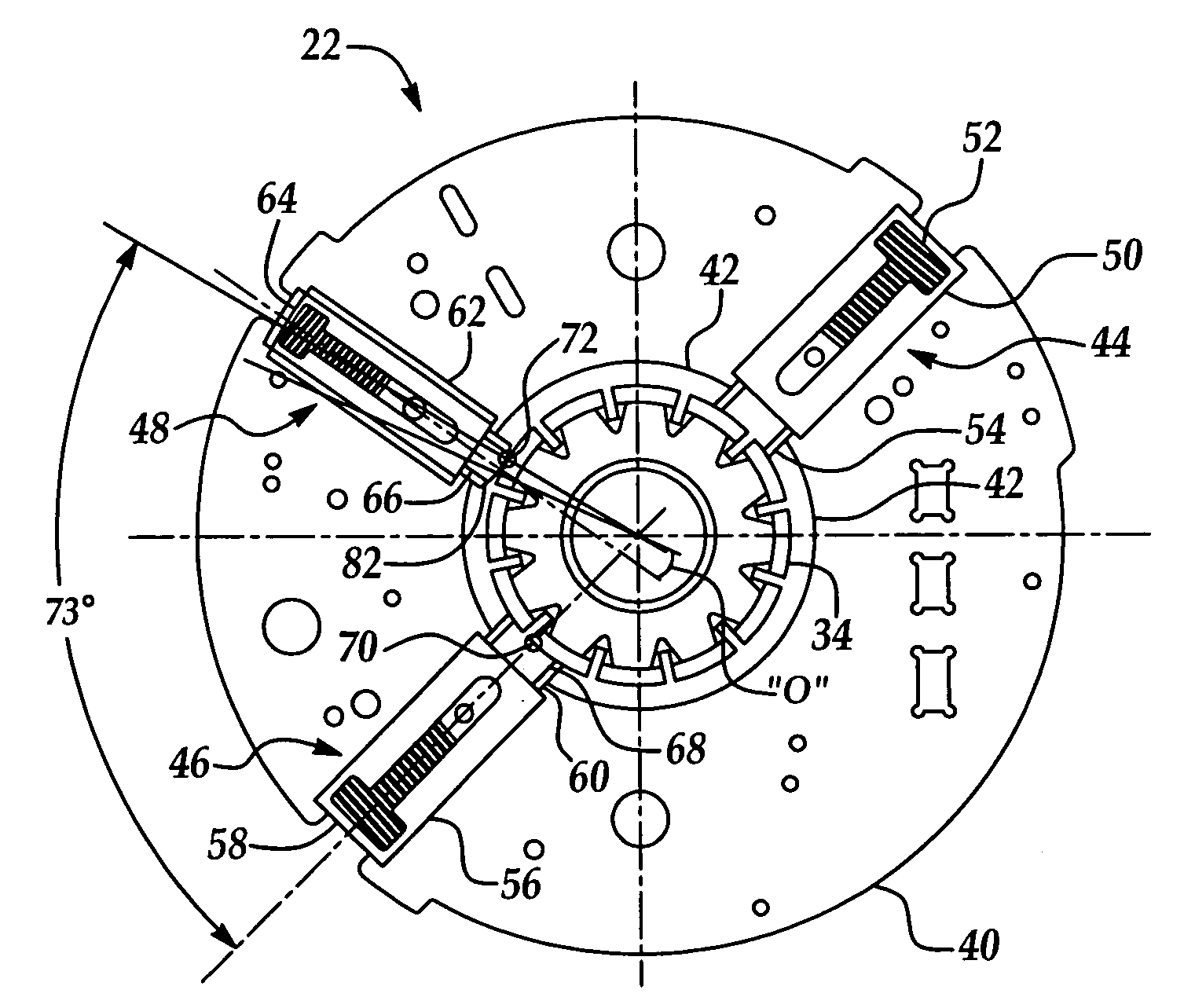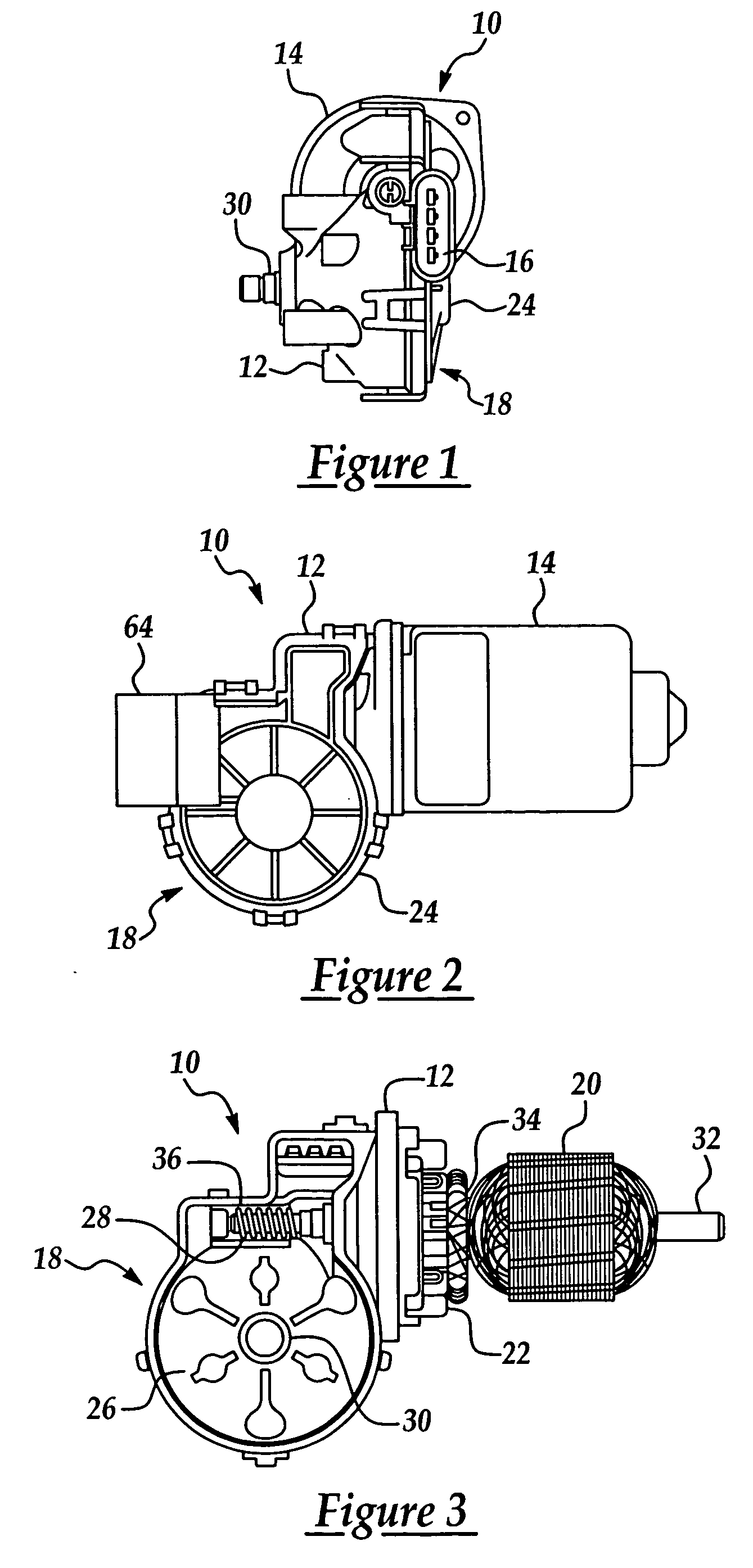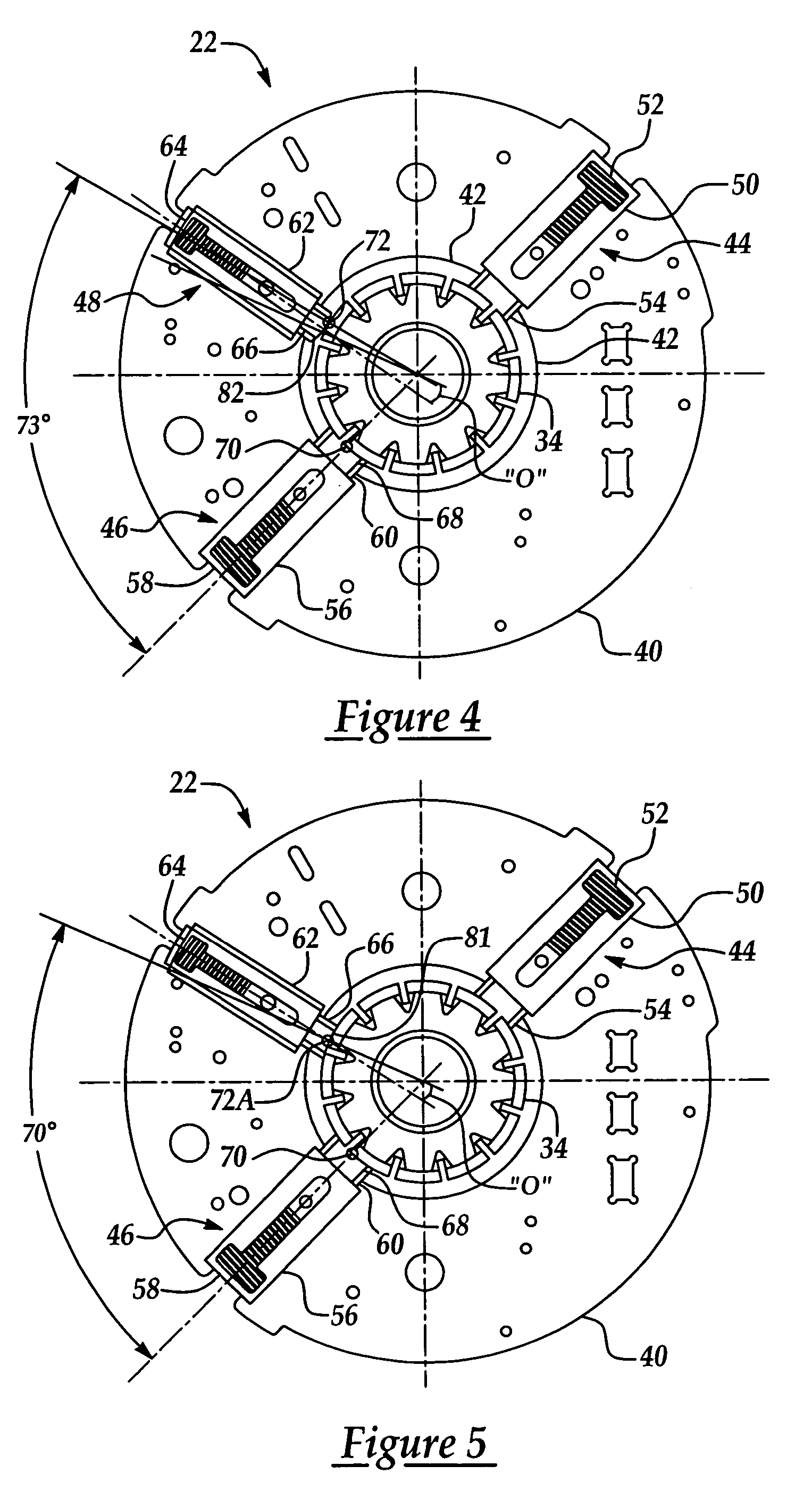Electric motor having convex high-speed brush
a high-speed brush and electric motor technology, applied in the direction of dynamo-electric brake control, dynamo-electric brake/clutch, mechanical energy handling, etc., can solve the problems of motor speed increase, undesirable reduction of motor speed, undetectable differences, etc., and achieve the effect of faster high-speed outpu
- Summary
- Abstract
- Description
- Claims
- Application Information
AI Technical Summary
Benefits of technology
Problems solved by technology
Method used
Image
Examples
Embodiment Construction
)
[0025] Referring now to the Figures, a two-speed DC motor of the present invention is generally indicated at 10 in FIGS. 1, 2, and 3 where like numerals are used to designate like structure. These Figures illustrate various views of the two-speed DC motor 10, which includes a main body 12, an armature case 14, and an electrical connector 16. The two-speed DC motor 10 illustrated herein is of a type that may be employed with a mechanical system that requires a stepped down motor output. Thus, as illustrated, the main body 12 may include a gear assembly generally indicated at 18, a wire wound armature 20, and a brush plate assembly 22. In FIG. 3, the cover plate 24 of the gear reduction assembly 18 and the armature case 14 are removed for clarity.
[0026] The gear reduction assembly 18 includes a drive wheel 26 that has teeth 28 formed about it outer circumference. A motor drive shaft 30 is fixedly mounted to the center of the drive wheel 26. The armature 20 includes a shaft 32 and co...
PUM
 Login to View More
Login to View More Abstract
Description
Claims
Application Information
 Login to View More
Login to View More - R&D
- Intellectual Property
- Life Sciences
- Materials
- Tech Scout
- Unparalleled Data Quality
- Higher Quality Content
- 60% Fewer Hallucinations
Browse by: Latest US Patents, China's latest patents, Technical Efficacy Thesaurus, Application Domain, Technology Topic, Popular Technical Reports.
© 2025 PatSnap. All rights reserved.Legal|Privacy policy|Modern Slavery Act Transparency Statement|Sitemap|About US| Contact US: help@patsnap.com



